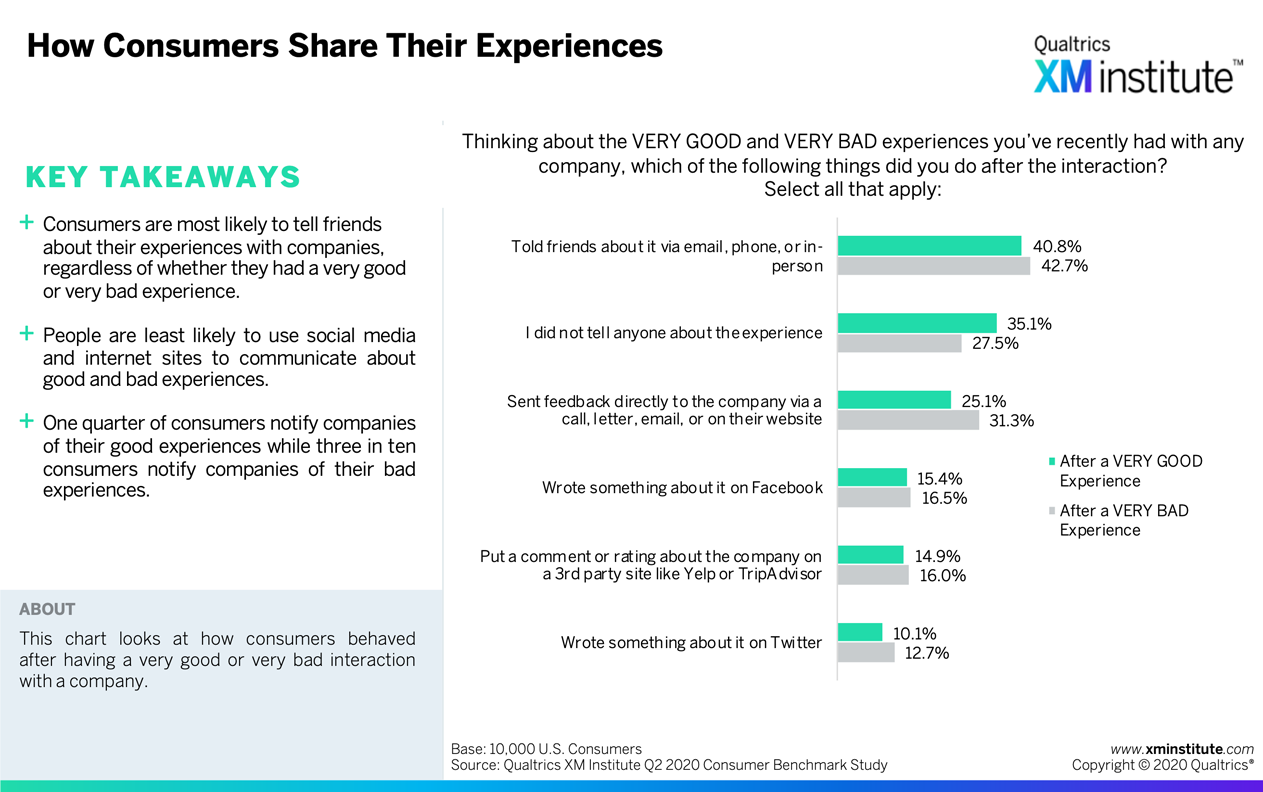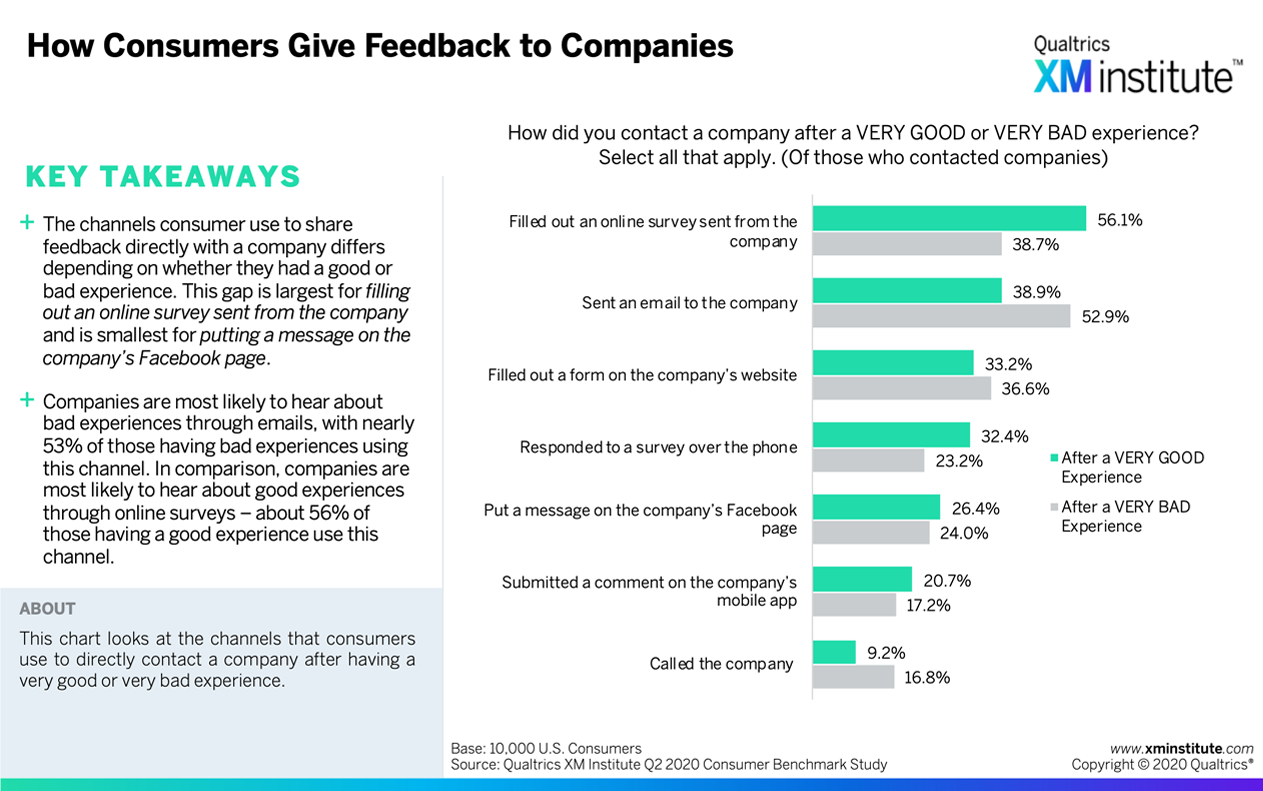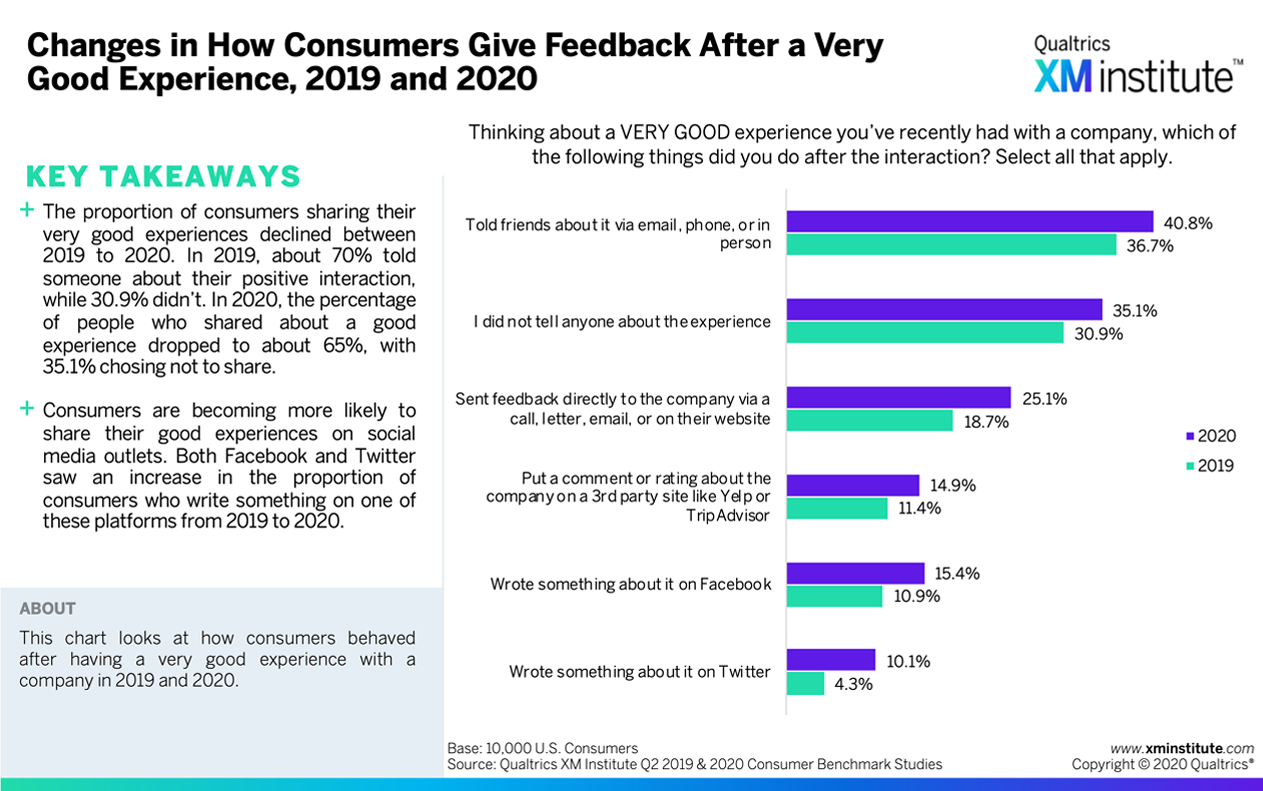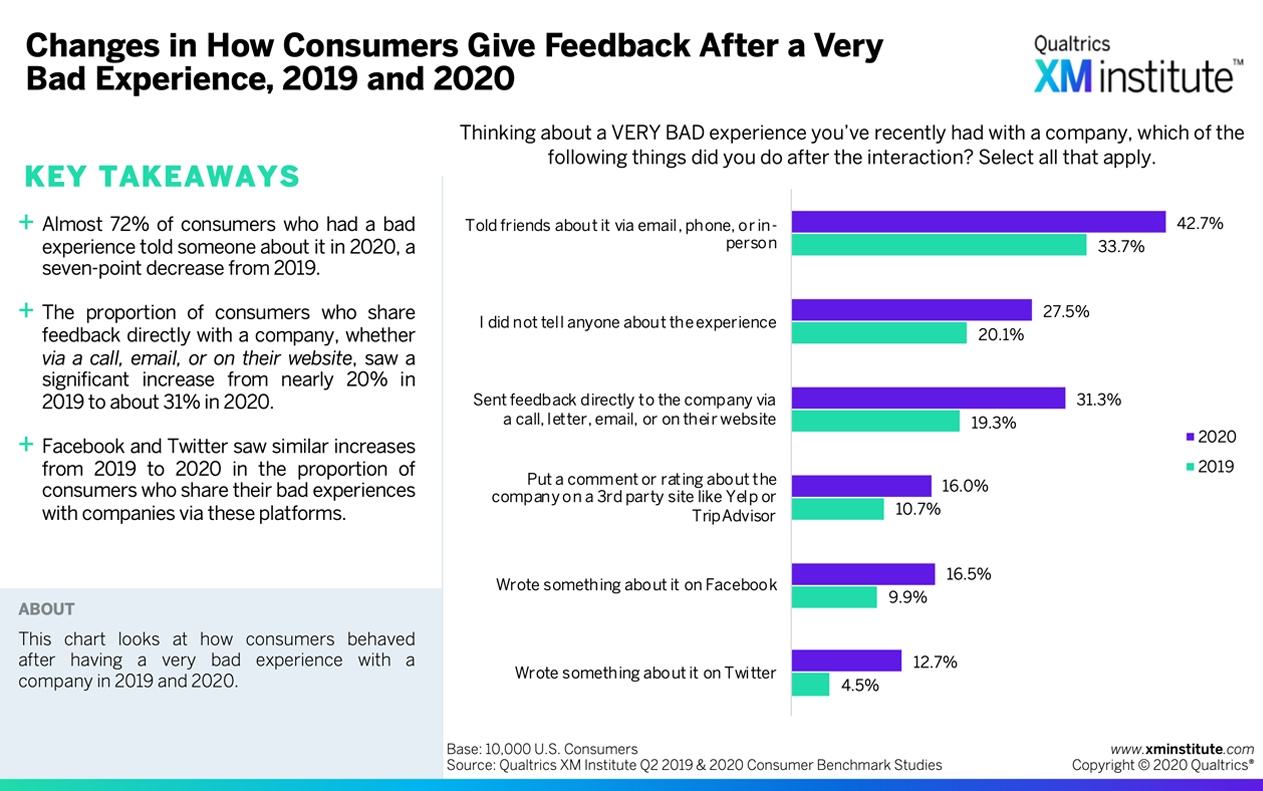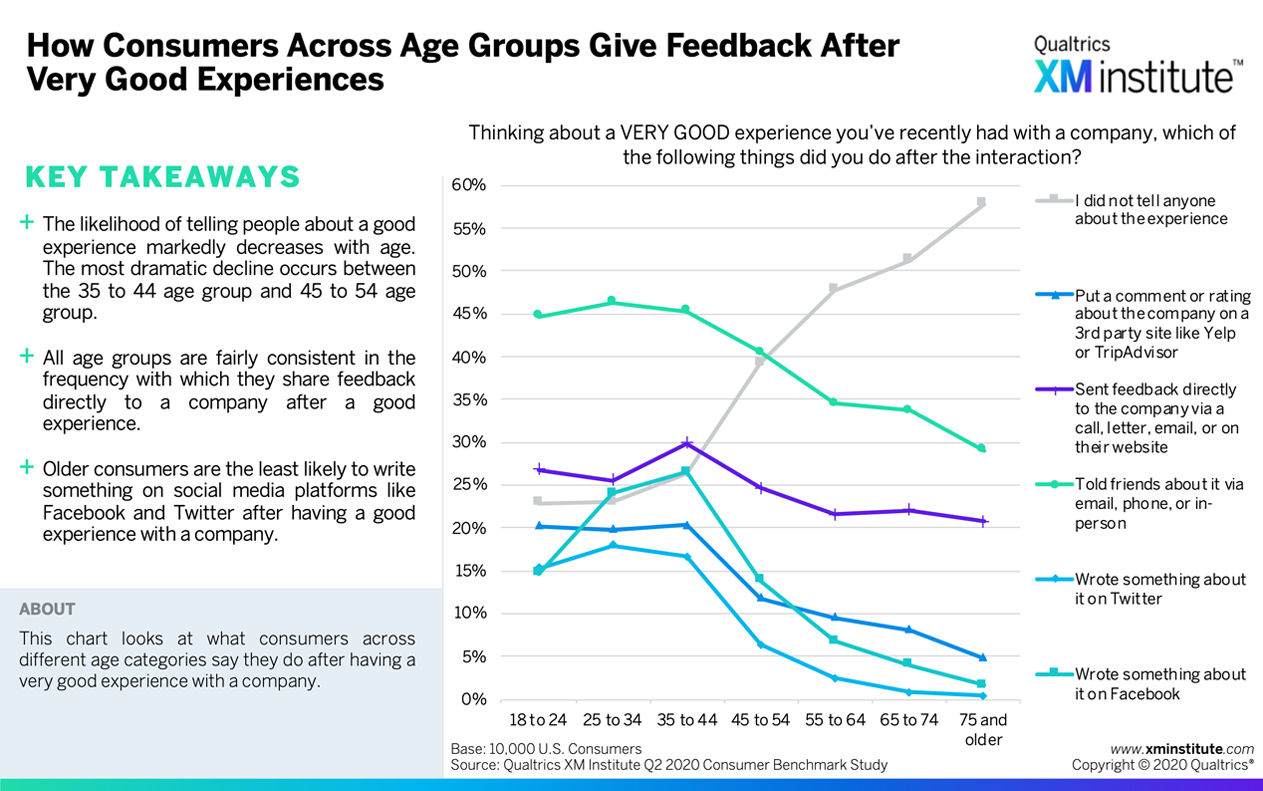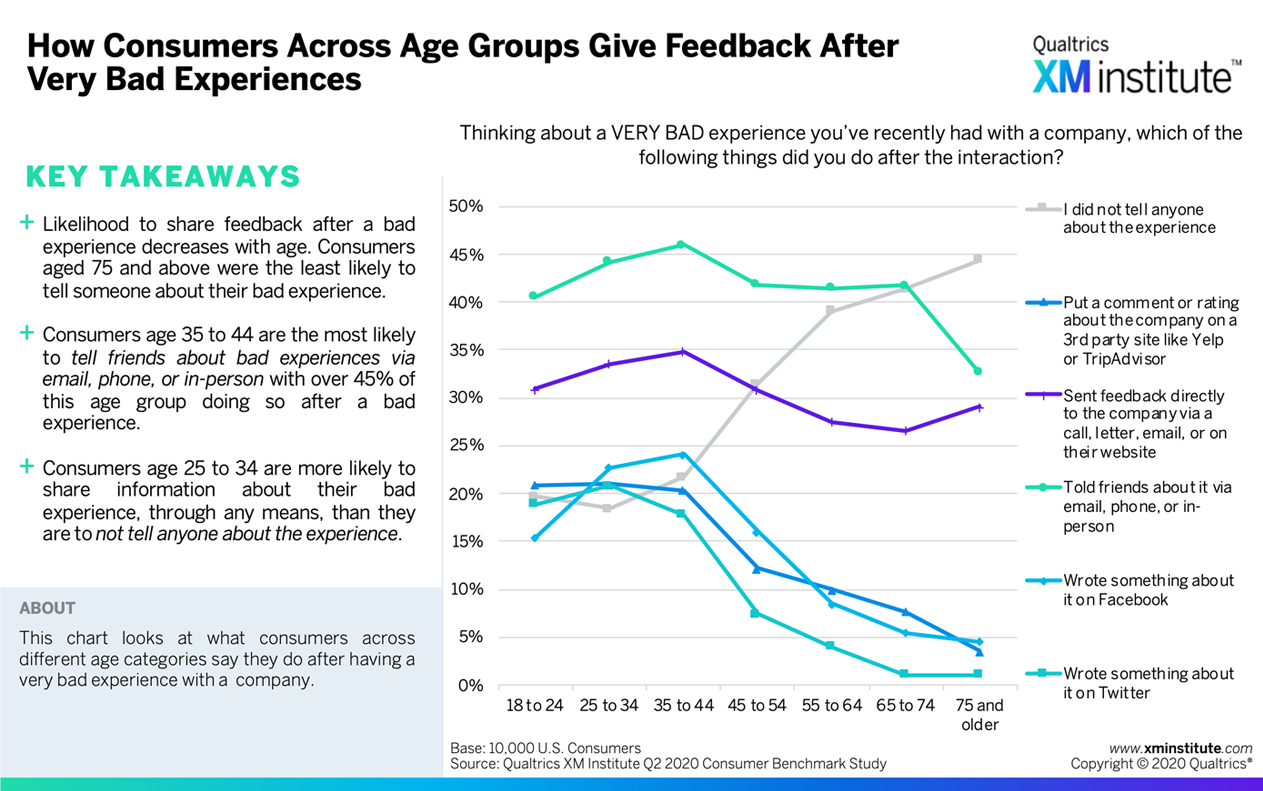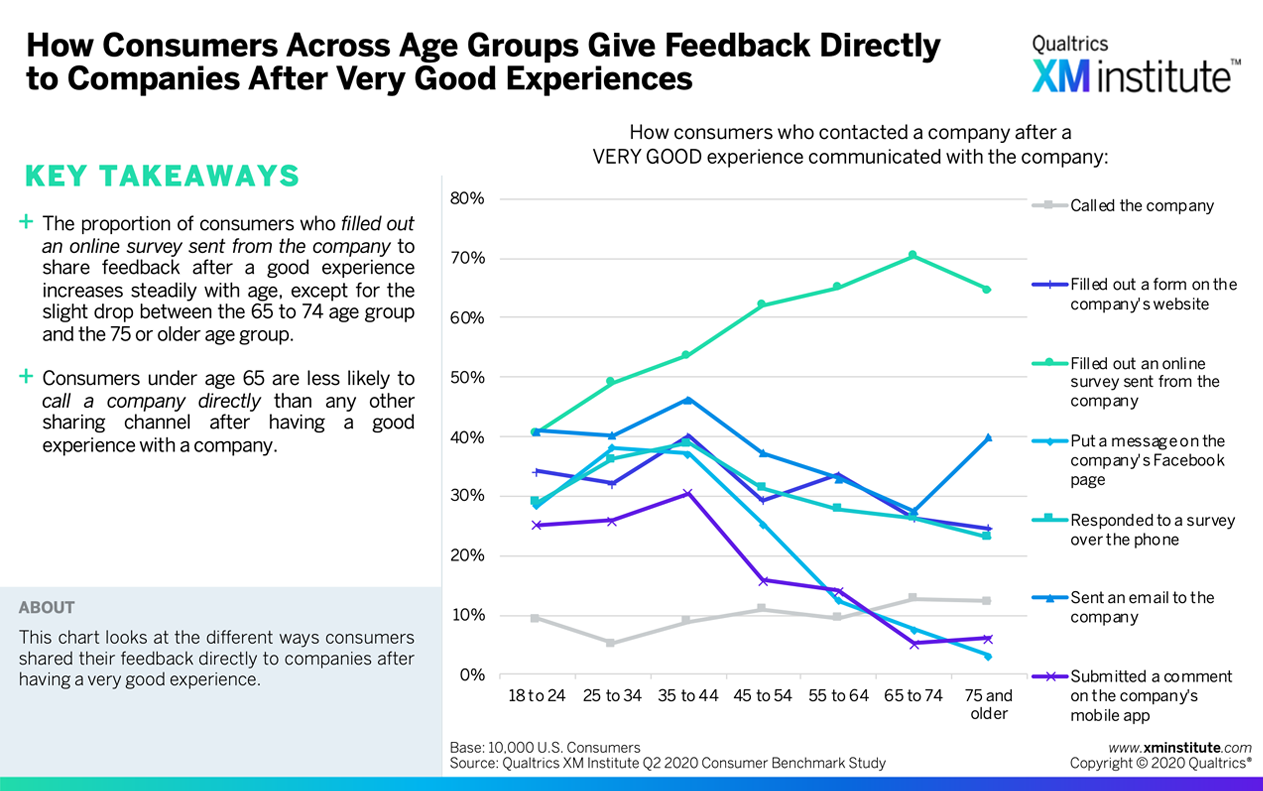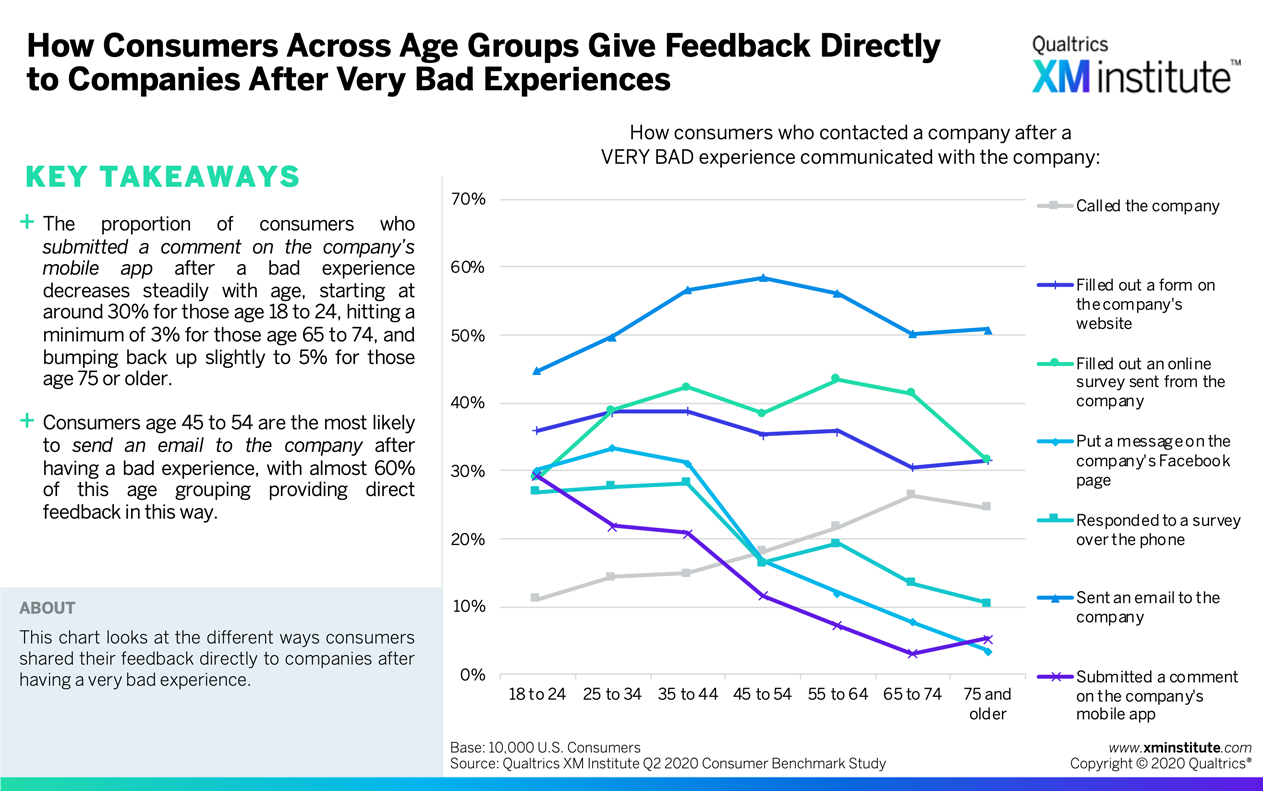Key Findings
Data from the XM Institute have shown that consumers have slightly different preferences for sharing their feedback depending on whether their experiences with a company were good or bad. To understand the nature of this feedback, including when it’s given and by whom, we analyzed data from 10,000 U.S. consumers about how they provide feedback. Here are some highlights from this research. For more in-depth findings, see the Key Takeaway included in each figure:
- Most consumers talk about their experiences. Only about 28% of consumers indicated that they did not tell anybody after having a bad experience with a company, and this proportion increases slightly to 35% for consumers who had a good experience with a company. Additionally, over 40% of consumers tell somebody in person about their experiences, regardless of whether good or bad.
- Online surveys and email are the most commonly used feedback mechanisms. Over half of consumers who contacted a company after having a good experience with them did so via an online survey sent directly from the company. For bad experiences, consumers who contact a company are most likely to do so by sending an email to the company, with 53% of consumers saying they’ve used that channel.
- The use of social media and internet sites for feedback is on the rise. The proportion of consumers who used social media and internet sites to talk about their experiences – both good and bad – increased from 2019 to 2020. Specifically, the percentage-point increase for each channel over the last year for consumers who had a bad experience was 5.3 points for commenting on a third party site, 6.6 points for writing on Facebook, and 8.2 points for writing on Twitter).
- Feedback preferences vary by generation. The tendency to tell someone about good or bad experiences decreases steadily with age. While over 75% of 18- to 24-year-olds tell someone about their experiences, less than half of consumers who are 75 or older share their experiences. However, the one exception to these generational differences is the preference for calling the organization after a good experience, as right around 10% of consumers in each group indicate that they do so.
Figures
- How Consumers Share Their Experiences (see Figure 1)
- How Consumers Give Feedback to Companies (see Figure 2)
- Changes in How Consumers Give Feedback After a Very Good Experience, 2019 and 2020 (see Figure 3)
- Changes in How Consumers Give Feedback After a Very Bad Experience, 2019 and 2020 (see Figure 4)
- How Consumers Across Age Groups Give Feedback After Very Good Experiences (see Figure 5)
- How Consumers Across Age Groups Give Feedback After Very Bad Experiences (see Figure 6)
- How Consumers Across Age Groups Give Feedback Directly to Companies After Very Good Experiences (see Figure 7)
- How Consumers Across Age Groups Give Feedback Directly to Companies After Very Bad Experiences (see Figure 8)


